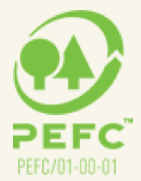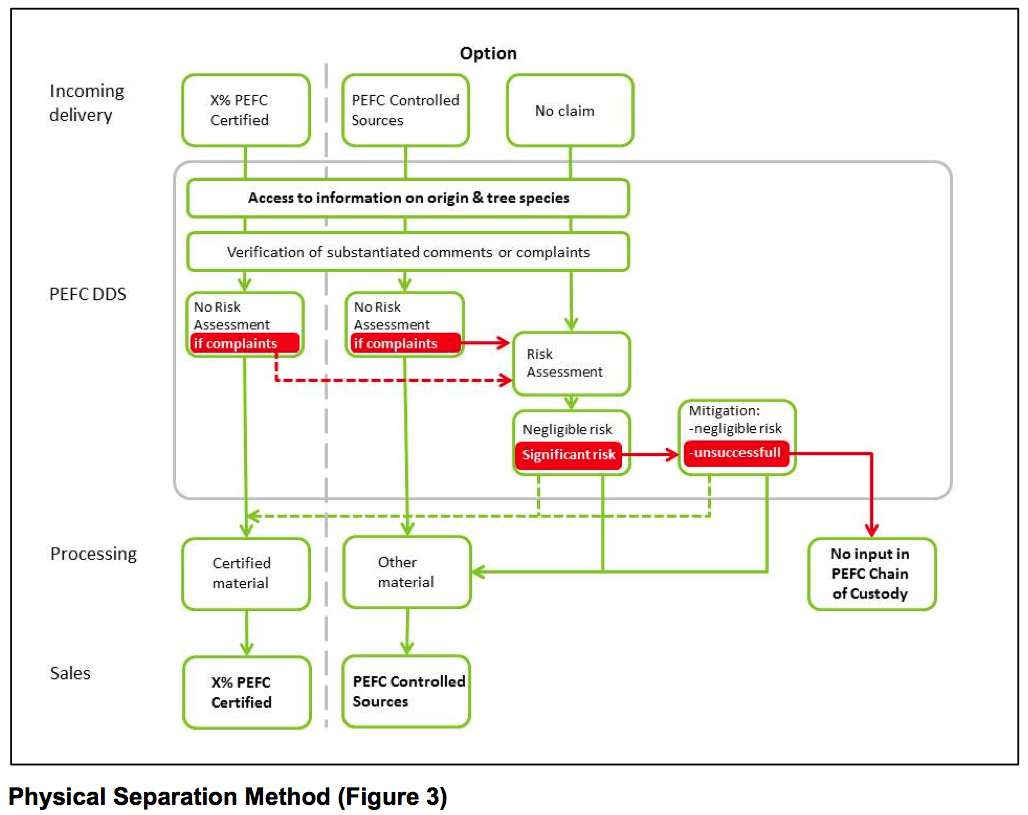 In our last post, we recommended the new PEFC Guidance Document (PEFC GD 2001:2014) as “required reading” for anyone with a serious interest in Chain of Custody (CoC) certification for wood products.
In our last post, we recommended the new PEFC Guidance Document (PEFC GD 2001:2014) as “required reading” for anyone with a serious interest in Chain of Custody (CoC) certification for wood products.
Along with many industry watchers, we have been studying this closely since its release just 2 weeks ago. Oddly enough, our most interesting observation so far is about what has been left out.
Very Comprehensive and Almost Complete
The guide is a very comprehensive document. It is carefully written and covers nearly every clause of the CoC standard. In particular, there is an exhaustive discussion of the newly formatted Due Diligence System (DDS) requirements. By far, the best part of this section – and perhaps of the whole document – is two flow charts found on page 11 & 12. I have reproduced them here:
These two charts provide a very helpful overview of how both certified and non-certified material may flow through a PEFC system – following their new requirements for DDS and CoC. The chart on the left is for simple CoC (i.e. transfer or physical separation). The chart on the right is for “complex CoC” (i.e. percentage or credit accounting). (See this post for explanation of those terms) Viewed another way, we can list these steps in sequence:
- Identify the input claims
- “Access” required source information
- Exempt from Risk Assessment (if permitted)
- Conduct a Risk Assessment (if required)
- Mitigate any identified Risk (if necessary)
- Address comments and complaints
What is Missing?
To find what is overlooked, we have to return to the 2013 CoC standard. Section 5 is entitled: Minimum Due Diligence System (DDS) Requirements. The new PEFC Guide tells us (on page 22) that “…DDS is embedded in the main body of the standard and applies to all organizations…” It also tells us that DDS “…works on the basis of three steps:” which it defines as:
- Gathering of information (clause 5.2)
- Risk assessment (clause 5.3)
- Risk mitigation (clause 5.5 & 5.6)
But what about clause 5.1? These are the so-called “General Requirements” of DDS – a title that suggests minor, administrative requirements. And the first three indicators are just that; defining the scope and organization of DDS systems. Indicators 5.1.5 & 5.1.6 are requirements to comply with international treaties and regulations, including CITES and import/export sanctions. It is the last three indicators – 5.1.7, 5.1.8, & 5.1.9 – that deserve more attention. They are anything but administrative. Here is an excerpt from the standard:
Indicator 5.1.7 prohibits the use of “conflict timber”. The new guide provides a definition (straight from the UN) that is informative, but not particularly helpful. What is PEFC’s expectation here? Is each and every CoC company – including printers buying only PEFC-certified inputs and specifically exempt from Risk Assessment requirements – expected to conduct its own independent investigation? We don’t think so, but we wish PEFC has told us.
Indicator 5.1.8 effectively prohibits the use of genetically modified (GMO) wood in PEFC products. This indicator may be easy to ignore for the time being, as it is well known that no commercially-significant production of GMO wood is available. But GMO technology is fully established in agriculture. Does PEFC expect all certified companies to monitor this sector independently? Their new guide does not even address the question.
Indicator 5.1.9 may be the most troubling of all. It prohibits the inclusion of “any wood based material originating in conversion of forests to other vegetation type”. This effectively means that…
- if one farmer cuts down one tree to make it a bit easier to turn his tractor at the end her field; and
- if she happens to sell that one tree to a local logger,
- who happens to supply logs to a local pulp mill,
- who sells pulp to a regional paper manufacturer,
- whose paper is traded by 16 different international paper merchants, and
- converted by 64 different converting houses,
- before finding its way to 234 different commercial printers, spread halfway around the world.
PEFC seems to be telling us that each and every one of these 317 certified companies is expected to search through its supply chain to find that one objectionable tree. Is this what they really mean? We don’t think so, but we really do not know because the guidance doesn’t address this indicator.
Written by a Lawyer?
It is well known that the recent update to PEFC’s CoC standard was largely driven by concerns about the European Union Timber Regulation (EUTR). We have written on the subject here, and PEFC actively promotes the alignment of its program with EUTR requirements. This is a good thing – not just for companies who sell products in the EU, but also for folks who do business in the US, Canada, Australia, and other places where similar regulations are in place.
Indicators 5.1.7, 5.1.8, & 5.1.9 were clearly added to the standard to conform to specific requirements of the EUTR. They are also found – appropriately – in the definition PEFC uses for “controversial sources”. We suspect that they were included in the General Requirements clause of Section 5 to make it abundantly clear (presumably to regulators) that avoidance of these supply categories is central to the standard.
The problem is that they are in the wrong place. By putting these indicators in Clause 5.1, PEFC places them outside the realm of Risk Assessment (clause 5.3). But they address topics which can only be addressed through a risk-based analysis. Those of us who have been interpreting the 2013 CoC standard for the past year have largely assumed that these troublesome indicators should be properly interpreted in the context of a risk-based analysis. PEFC could have made this clear for us in their recent, and otherwise very complete, guidance document. But they did not.


